'Oppenheimer' True Story: All About the Real Events That Inspired the Christopher Nolan Film
- Oops!Something went wrong.Please try again later.
- Oops!Something went wrong.Please try again later.
- Oops!Something went wrong.Please try again later.
Cillian Murphy plays J. Robert Oppenheimer, "the father of the atomic bomb," in the 2023 film
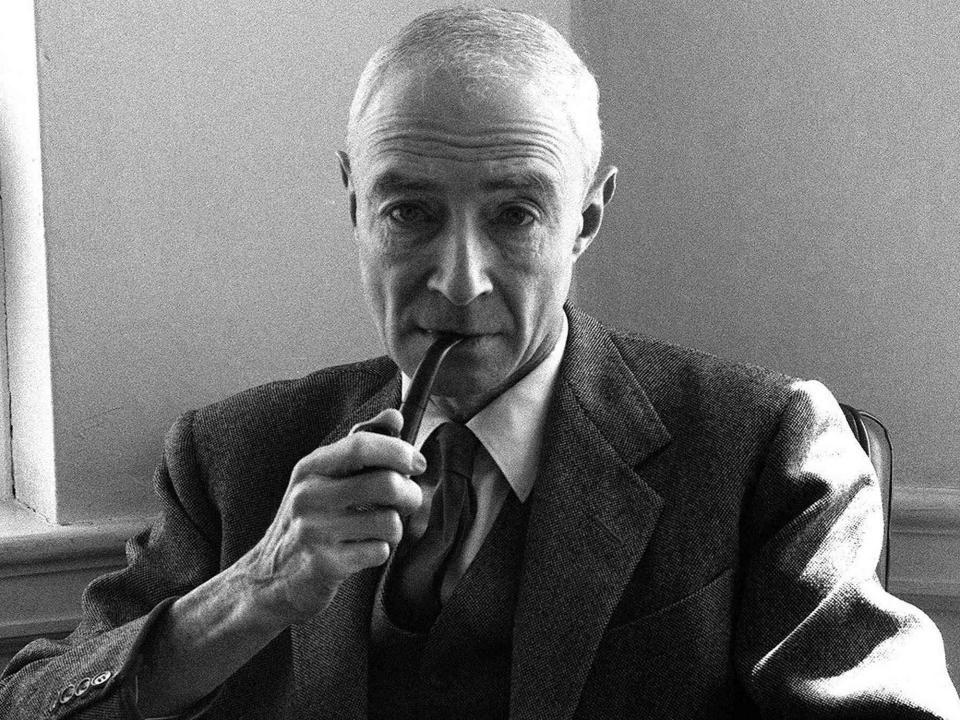
Photo 12 / Alamy
Christoper Nolan's behemoth film Oppenheimer is finally available to stream at home. The movie stars Cillian Murphy as the title character, renowned and notorious physicist J. Robert Oppenheimer.
Oppenheimer is most remembered as the “father of the atomic bomb” and was the physicist in charge of the Manhattan Project, the name given to the top-secret project that developed the weapons the United States used to devastate the Japanese cities Hiroshima and Nagasaki in 1945. His path toward the creation of the bomb was etched in his childhood when Oppenheimer proved to be scientifically gifted and advanced far beyond his years.
Related: Cillian Murphy's 'Oppenheimer' Diet Was ‘Like, an Almond' a Day, Says Costar Emily Blunt
As a reticent and thoughtful man, Oppenheimer didn’t always share his inner workings freely. He spoke out about the gravity of the atomic bomb following the two detonations, and in later years openly opposed the development of the hydrogen bomb for use against the Soviet Union during the Cold War. The latter choice meant he was investigated as a Communist sympathizer, a charge Oppenheimer denied.
Oppenheimer, which earned a Golden Globe for best motion picture and several Oscar nominations, is available to stream exclusively on Peacock.
Here is what to know about the real events that inspired the Christopher Nolan film.
Who was J. Robert Oppenheimer?
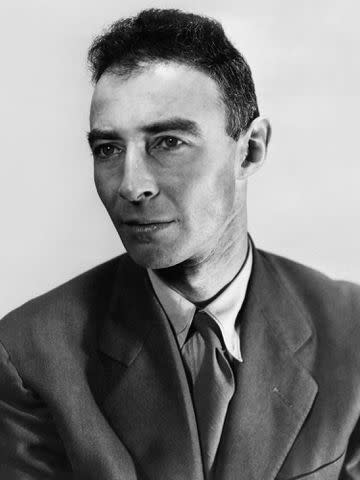
Alpha Historica / Alamy
Julius Robert Oppenheimer was brought into the Manhattan Project soon after it began in 1942. While President Roosevelt expressed some hesitation, the U.S. launched the project to explore building an atomic bomb during World War II.
As shared by the National Museum of Nuclear Science and History, Oppenheimer, already a renowned theoretical physicist at the time, served as the director of the Los Alamos Laboratory throughout the project. He was eventually nicknamed the “father of the atomic bomb” after being put in charge of both the research and design of the devastating weapon.
Oppenheimer was born on April 22, 1904, and gained a reputation for academic giftedness early in his life. By the time he was 10 years old, Oppenheimer was studying physics and chemistry. At 12 years old, the New York Mineralogical Club asked him to speak at the group’s meeting without realizing he was not yet a teen. He graduated from Harvard University at the age of 22 after finishing his degree in three years.
Oppenheimer eventually went to Europe to study at the University of Cambridge and later at the University of Göttingen's Institute for Theoretical Physics. Though a scene in Oppenheimer shows the young theoretical physicist poisoning an apple on his Cambridge professor's desk with potassium cyanide only to correct his mistake the following day, Oppenheimer's grandson Charles told TIME the incident is untrue. "There's no record of him trying to kill somebody," Charles told the publication. "That's a really serious accusation and it's historical revision. There's not a single enemy or friend of Robert Oppenheimer who heard that during his life and considered it to be true."
Oppenheimer went on to receive a Ph.D. degree under Max Born, a physicist who helped develop the theory of quantum mechanics. He returned to the United States and began working as an advisor at the Atomic Energy Commission following World War I. He also taught at the University of California, Berkeley, from 1929 to 1943.
In October 1942, Oppenheimer was put in charge of what was then known as Project Y, a laboratory that focused on researching weapon physics. He served as director of the Los Alamos facility from 1943 to 1945 before resigning.
Did J. Robert Oppenheimer have a family?
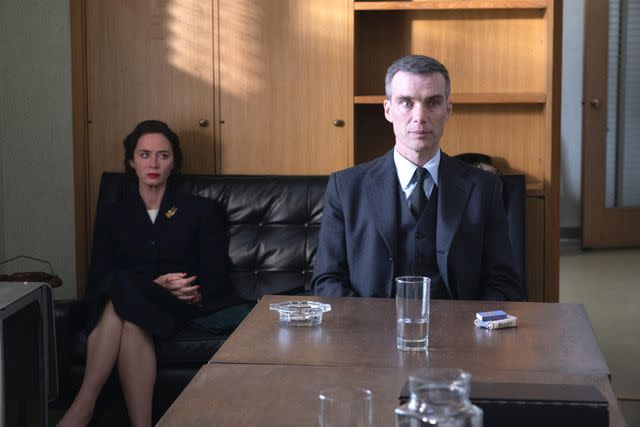
PictureLux / The Hollywood Archive / Alamy
Oppenheimer married biologist Katharine "Kitty" Oppenheimer (née Puening) in 1940. Kitty (portrayed by Emily Blunt) had been married three times prior: She annulled her first marriage in 1933; her second husband — who was a Communist Party member — died during the Spanish Civil War; and she was married to her third husband, Richard Harrison, when she met Oppenheimer.
Kitty and Oppenheimer welcomed two children together: son Peter in 1941 and daughter Katherine "Toni" in 1944.
According to the National Museum of Nuclear Science and History, Kitty also worked at the Los Alamos facility for a short period of time and was well-known for the dinner parties she threw for the other wives of scientists at the facility. She was Oppenheimer’s first and most important confidant in all matters of his life. Kitty also struggled with alcoholism and depression, especially following Oppenheimer's death in 1967. She died in 1972 in Panama City, Panama, after suffering a pulmonary embolism.
Prior to meeting Kitty, Oppenheimer was involved with psychiatrist and American Communist Party member Jean Tatlock (Florence Pugh). The two met in 1936, though Tatlock ended their relationship in 1939. However, Oppenheimer and Tatlock rekindled their romance during his marriage to Kitty, with the physicist even visiting Tatlock in San Francisco as late as 1943. Tatlock died in January 1944.
What did J. Robert Oppenheimer invent?

Pictorial Press Ltd / Alamy
Oppenheimer primarily worked in theoretical physics and made a number of contributions to the field. While he is known for the development of the atomic bomb, the physicist was also responsible for the development of the Born-Oppenheimer approximation, which is a mathematical approximation in molecular dynamics
His work is also credited with predicting later findings by other scientists, such as the neutron, meson and neutron star, in addition to a number of theoretical contributions.
What was the Manhattan Project?
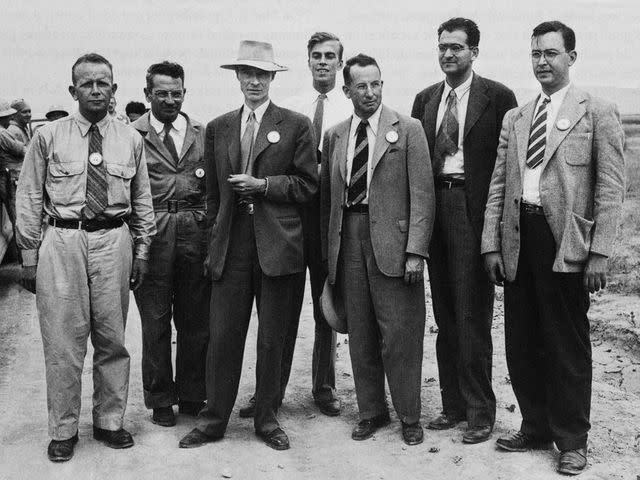
Science History Images / Alamy
In 1939, scientists around the world learned that Nazi Germany’s scientists had learned how to split a uranium atom. The process is known as nuclear fission and requires a neutron to collide with a uranium atom, which in turn releases an amount of energy that can have devastating consequences. As such, the news appropriately alarmed scientists around the world, especially if it meant the Nazis would develop their own atomic weapons.
Albert Einstein (Tom Conti), who fled Nazi Germany, and physicist Leo Slizard each took steps to speak to President Roosevelt about the gravity of the situation and to encourage Roosevelt to develop a program in the United States so that scientists could work toward developing their own project. The U.S. government launched the Manhattan Project in 1942, though Einstein was not involved in the military and scientific project. According to the National Museum of Nuclear Science and History, the project was originally headquartered in New York City, hence the name, and led by Lieutenant General Leslie Groves (Matt Damon).
Related: Christopher Nolan's 'Oppenheimer': Everything to Know
From there, two secret nuclear facilities were constructed in Oak Ridge, Tennessee, and Hanford, Washington, as well as a laboratory in Los Alamos, New Mexico, where Oppenheimer was head of research. While 120,000 people worked at the Manhattan Project, only a handful knew the true goal of the work they were contributing to.
Known as the Trinity test, the first atomic bomb was tested on July 16, 1945, in the Jornada del Muerto desert — more than 200 miles south of Los Alamos. Oppenheimer chose the code name Trinity inspired by the poetry of John Donne. The results were a shock to everyone involved; homes 100 miles away could reportedly feel the explosion and a mushroom cloud ballooned about eight miles into the sky.
Following the Trinity test, Oppenheimer later recalled, "A few people laughed, a few people cried, most people were silent." He also famously said that a line from the Hindu scripture Bhagavad-Gita came to mind: “Now, I am become Death, the destroyer of worlds.”
What did J. Robert Oppenheimer think of the atomic bomb?
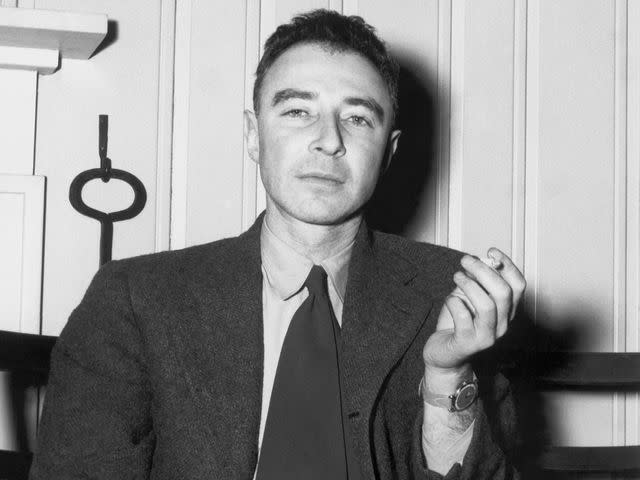
Prisma by Dukas Presseagentur GmbH / Alamy
It seems as though Oppenheimer believed in his work, including the work that led up to the ultimate detonation of atomic bombs over Hiroshima and Nagasaki, Japan. In the 2012 book Robert Oppenheimer: A Life Inside the Center, author Jay Monk wrote that on Aug. 6, 1945, (when the first bomb was dropped), Oppenheimer and his fellow scientists seemed victorious.
As the book describes, “To ecstatic cheering, Oppenheimer told the crowd that it was too early to say what the results of the bombing had been, but that ‘the Japanese didn’t like it.’ ” Monk added Oppenheimer's only regret was that "we hadn't developed the bomb in time to use it against the Germans."
The second bomb devastated Nagasaki, Japan, on Aug. 9, 1945. Monk also wrote that President Truman and Oppenheimer were not involved in the decision to deploy the weapon, as a previous directive issued on July 24 of the same year had already authorized General Spaatz to drop subsequent atomic bombs “as soon as made ready by the project staff.” The following day, President Truman issued an order to stop atomic bombings.
It does not seem that Oppenheimer was proud of or happy about the deployment of the second bomb. Monk wrote that an FBI report stated the physicist was a “nervous wreck” following the events of Aug. 9, and was also described as being “reluctant to promise that much real good could come out of continuing atomic-bomb work.”
What did J. Robert Oppenheimer say after the nuclear explosions in 1945?
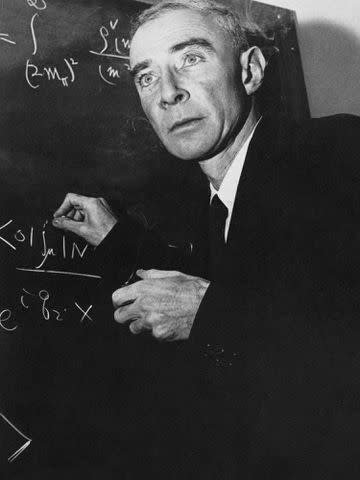
Science History Images / Alamy
Oppenheimer left his post at the Los Alamos facility in November 1945. In his farewell speech, which the National Museum of Nuclear Science and History has since shared in full, Oppenheimer admitted that the initial reason the team built the bomb was that it was believed using a weapon of that nature might be the only way to win World War II. Once it became clear that the war could be won without using atomic weapons, he said, a different motivation kicked in.
As Oppenheimer put it, “Some people, I think, were motivated by curiosity, and rightly so; and some by a sense of adventure, and rightly so. Others had more political arguments and said, ‘Well, we know that atomic weapons are in principle possible, and it is not right that the threat of their unrealized possibility should hang over the world. It is right that the world should know what can be done in their field and deal with it.’ ”
Ultimately, Oppenheimer seemed resolute on a number of issues, including the fact that with the detonation of two atomic bombs, the world had to contend with a new problem. He said, “I think it is true to say that atomic weapons are a peril which affect everyone in the world, and in that sense a completely common problem, as common a problem as it was for the Allies to defeat the Nazis. I think that in order to handle this common problem there must be a complete sense of community responsibility. I do not think that one may expect that people will contribute to the solution of the problem until they are aware of their ability to take part in the solution.”
Was J. Robert Oppenheimer a Communist?
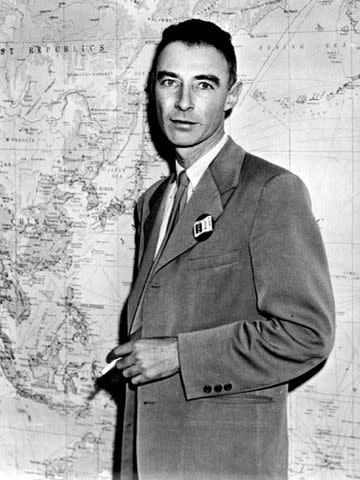
SuperStock / Alamy
The years that followed the detonation of two atomic bombs were politically fraught in the United States. Oppenheimer was named Chairman of the General Advisory Committee for the Atomic Energy Commission, and in this capacity, argued against the development of a hydrogen bomb.
Related: Robert Downey Jr. Declares 'Oppenheimer' the 'Best Film I've Ever Been In'
At the time, the United States was well into the Cold War with the Soviet Union, and Oppenheimer’s recommendation against creating a hydrogen bomb was seen as politically dubious. As the Institute for Advanced Study noted, the physicist was soon caught up in McCarthyism and investigated by the U.S. government.
In December 1953, then-Chairman of the Atomic Energy Commission (and foe of Oppenheimer) Lewis Strauss (Robert Downey Jr.) informed the physicist that his security clearance had been suspended due to his alleged ties to the Communist Party and urged Oppenheimer to quit. (Oppenheimer's mistress Tatlock was a known member of the Communist Party, as well as his brother Frank Oppenheimer and sister-in-law Jackie. Oppenheimer had also been under investigation while teaching at Berkeley and during the Manhattan Project.)
Rather than step down, Oppenheimer requested a hearing into the matter, which began in April 1954 and lasted for four weeks. Several of Oppenheimer's former colleagues testified against him, including Edward Teller (Benny Safdie). Ultimately, Oppenheimer lost his security clearance and was eventually stripped of his title.
In 1962, President Kennedy asked Oppenheimer to come to the White House, where he received an apology for what happened. He received the Enrico Fermi Award for his scientific achievements one year later.
And in 2022, United States Secretary of Energy Jennifer M. Granholm nullified the AEC's decision, saying, “more evidence has come to light of the bias and unfairness of the process that Dr. Oppenheimer was subjected to while the evidence of his loyalty and love of country have only been further affirmed," per The New York Times.
How did J. Robert Oppenheimer die?
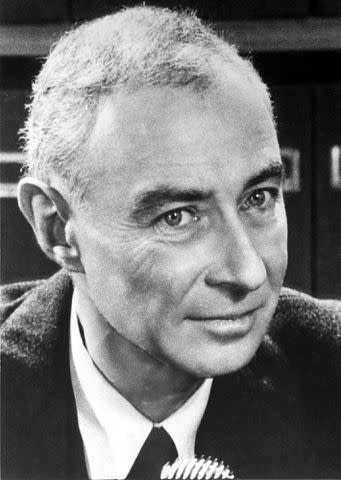
Everett Collection Historical / Alamy
Oppenheimer died from throat cancer on Feb. 18, 1967.
For more People news, make sure to sign up for our newsletter!
Read the original article on People.

